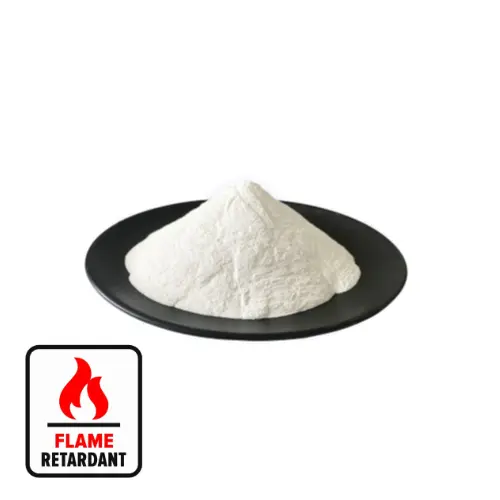Hebei Messi Biology Co., Ltd. stated that magnesium hydroxide is an important inorganic chemical material, but its surface polarity is very strong and it is easy to agglomerate, which brings great difficulties to its preparation and preservation; at the same time, the surface of the particles carries a positive charge, and it is also easy to be evenly dispersed in the polymer material due to electrostatic agglomeration; in addition, magnesium hydroxide, as an inorganic filler, has good surface hydrophilicity and poor binding ability with lipophilic polymer materials, which easily causes interface defects and reduces the mechanical properties of the composite material. Therefore, reasonable surface modification is extremely important for improving the performance of magnesium hydroxide.
1. Surfactant treatment
Surfactant treatment is a method of modifying the surface of magnesium hydroxide by using the unique “amphiphilic structure” of surfactant molecules under the action of van der Waals force, that is, one end of the molecule is a non-polar hydrophobic group (long-chain alkyl) and the other end is a polar hydrophilic group (-COOH, -NH2, etc.).
Since magnesium hydroxide has a high positive charge on its surface, it is suitable to use anionic surfactants and adopt a wet process. First, a certain solvent is used to disperse the magnesium hydroxide, and then a modifier is added to mix. Surfactants such as stearic acid, sodium stearate, sodium oleate, and sodium dodecyl sulfonate are commonly used.
Hebei Messi Biology Co., Ltd. successively used sodium stearate and sodium dodecyl sulfonate to modify industrial magnesium hydroxide. After modification, the agglomeration phenomenon of magnesium hydroxide particles was significantly reduced, and the activation rates of magnesium hydroxide were 89.4% and 90.5%, respectively, and the dispersibility was improved.

2. Coupling agent treatment
The coupling agent refers to an organic compound with a zwitterionic structure having a reactive functional group and an organic long chain, which can chemically bond with the surface of magnesium hydroxide and cover the surface of magnesium hydroxide particles, thereby making the surface of magnesium hydroxide particles organic, and changing from hydrophilic to hydrophobic. Silane coupling agents, titanate coupling agents, and aluminate coupling agents are more commonly used.
Most coupling agents have poor water resistance and can be dissolved and diluted in an inert organic solvent for use, so the dry process is mostly used for coupling agent treatment of magnesium hydroxide. That is, the coupling agent is diluted with an appropriate amount of inert solvent and sprayed on the magnesium hydroxide powder to ensure that the coupling agent is evenly dispersed on the surface of the magnesium hydroxide powder. The amount of solvent needs to be strictly controlled. If the amount is too small, the coating effect is poor. If the amount is too large, the excess solvent needs to be removed, and the modification cost increases. Therefore, recent researchers do not use solvent dilution, but directly mix the coupling agent with magnesium hydroxide powder for coating.
3. Microencapsulation
Microencapsulation technology is to use a polymer continuous film as a wall material to completely coat magnesium hydroxide to form tiny particles, namely microcapsule flame retardants, thereby improving thermal stability and improving compatibility with polymer matrices. The advantage of microcapsule coating technology is that when forming microcapsules, the flame retardant is wrapped to retain its own properties and isolate it from the outside world. Under appropriate conditions, the wall material is destroyed to release the flame retardant to play a role. The disadvantage is that the coating is difficult and will form an incomplete coating. Strict control of experimental conditions is required to form a complete coating. Commonly used coating wall materials include phenolic resin, melamine resin, urea-formaldehyde resin, etc.
4. Polymerization graft coating
Polymerization graft coating is a method of grafting and coating the surface of magnesium hydroxide by using polymer active monomers to undergo polymerization reaction under the action of initiators. Polymer grafting makes the surface of magnesium hydroxide organic, reducing the agglomeration between particles. At the same time, the grafted polymer has good physical compatibility with the matrix material, and filling it into the polymer material can obtain better dispersion and processing properties. In order to enhance the grafting effect, it is sometimes necessary to pre-treat the surface of inorganic particles before initiating graft polymerization.
5. Compound use of modifiers
Hebei Messi Biology Co., Ltd. uses compound modifiers to modify magnesium hydroxide, which is expected to achieve better modification effects. The compound use of modifiers has shown good flame retardant effects in practice. The compound use of different types of modifiers can give full play to the advantages of each type of modifier, form complementarity, and have good development prospects.
Hebei Messi Biology Co., Ltd. uses a compound of silane coupling agent and titanate to modify magnesium hydroxide, obtaining a magnesium hydroxide flame retardant with good viscosity and high dispersibility. By comparing the surface modification effect of magnesium hydroxide with that of its single component, the activity index, specific surface area and smoke suppression effect of the compound modifier after modification are higher than those of the single component modification. The compound modifier itself has a synergistic effect that enhances the modification effect on magnesium hydroxide.
